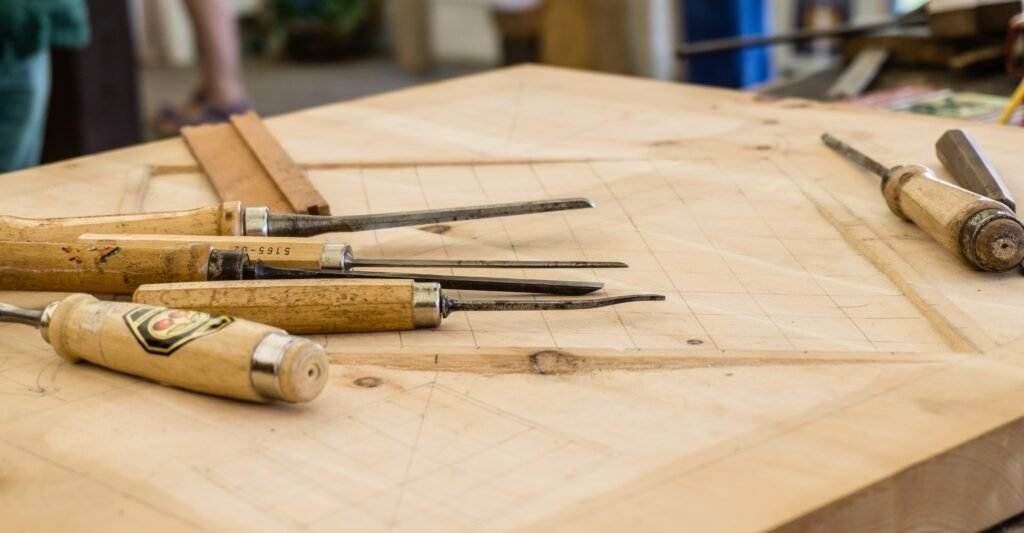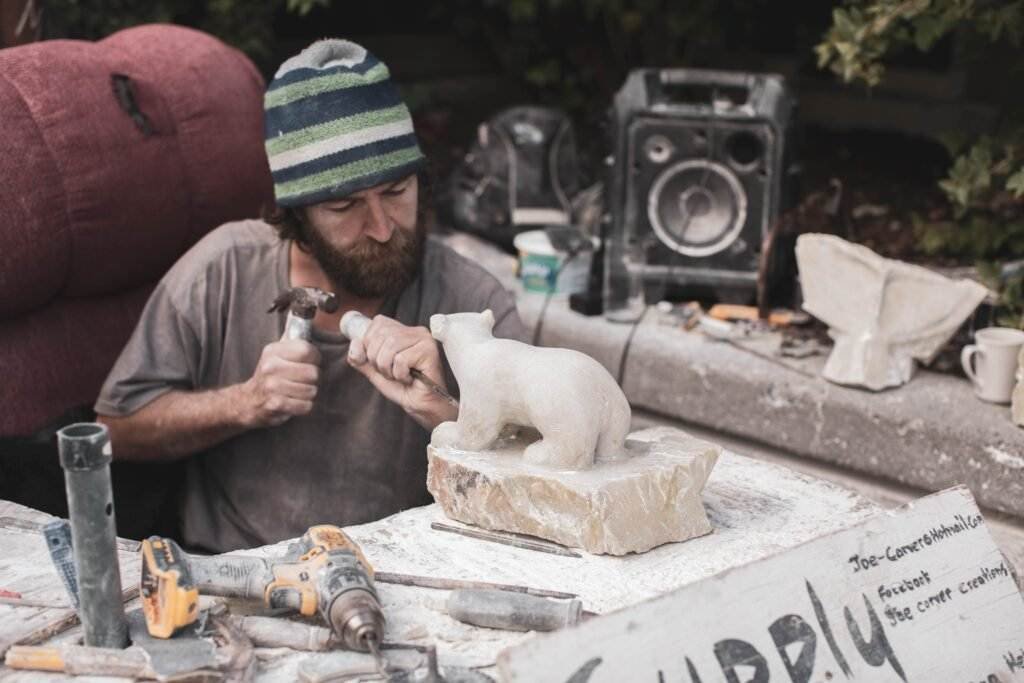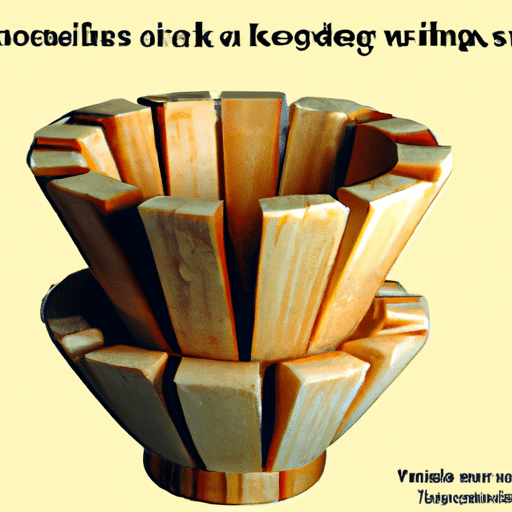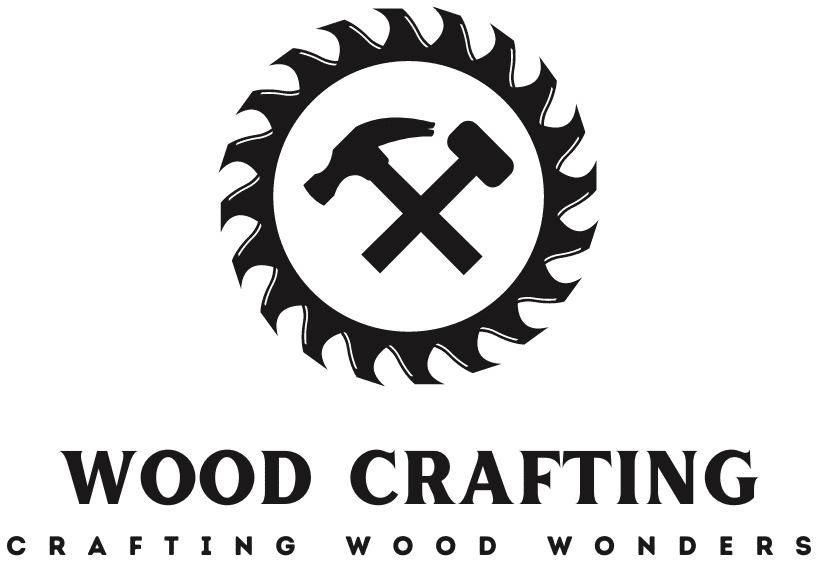In this article, you will discover ten valuable tips to enhance your woodworking skills. From choosing the right tools to practicing proper safety precautions, you will learn valuable insights that will take your craftsmanship to the next level. We will cover topics like measuring accurately, selecting the appropriate wood, and mastering essential techniques. By following these tips, you will gain the knowledge and confidence needed to create stunning woodwork projects that showcase your skills. Let’s get started on this exciting journey of advancing your woodworking abilities!

Choose the right tools and equipment
When it comes to woodworking, having the right tools and equipment is essential. It not only makes your work easier but also ensures better precision and quality in your projects. Here are a few tips on choosing the right tools and equipment for your woodworking ventures.
Selecting quality wood
The first step in any woodworking project is selecting the right wood. Choose quality lumber that is straight, free from knots, and has a consistent grain pattern. Different types of wood, such as oak, pine, and walnut, have different properties and characteristics, so it’s important to choose the one that suits your project best.
Understanding different types of saws
Saws are one of the most fundamental tools in woodworking. Understanding the different types of saws and their uses can greatly improve your woodworking skills. Circular saws are ideal for long, straight cuts, while coping saws are more suitable for intricate or curved cuts. Jigsaws, on the other hand, offer versatility and can be used in a variety of woodworking tasks.
Investing in essential woodworking tools
In addition to saws, there are several essential woodworking tools that every woodworker should have. These include a tape measure, chisels, planes, clamps, and a mallet. These tools will help you achieve precise measurements, smooth surfaces, and secure joints. Investing in high-quality tools is a worthwhile investment that will greatly enhance your woodworking abilities.
Learn and practice basic woodworking techniques
Once you have the right tools and equipment, it’s time to learn and practice basic woodworking techniques. Mastering these techniques is crucial for creating high-quality and durable woodworking projects.
Understanding wood grain
Understanding wood grain is essential for making accurate cuts and achieving desired results. Different grains require different cutting techniques and can affect the overall strength and appearance of your project. Take the time to study and understand the grain patterns of different types of wood to maximize the potential of your projects.
Proper measuring and marking
Accurate measuring and marking are essential for precise woodworking. Invest in a quality tape measure and learn how to use it effectively. Take the time to double-check your measurements and use marking tools, such as pencils or marking knives, to make clear and precise marks. This attention to detail will ensure that your cuts and joints are spot on.
Using chisels and planes effectively
Chisels and planes are essential tools for shaping and smoothing wood surfaces. Learning how to use them effectively will greatly improve the quality of your projects. Practice sharpening your chisels and planes regularly to ensure clean and smooth cuts. Mastering the techniques of chiseling and planing will enable you to achieve professional-looking finishes on your projects.

Ensure safety in the workshop
Woodworking can be a rewarding hobby, but it can also be dangerous if proper safety precautions are not taken. Prioritizing safety in your workshop is crucial for preventing accidents and injuries.
Wearing appropriate protective gear
Always wear appropriate protective gear, such as safety glasses, ear protection, and a dust mask, when working with wood. These items will protect your eyes, ears, and lungs from potential hazards. Additionally, wearing gloves can provide extra protection and grip when handling tools and materials.
Maintaining a clean and organized workspace
A clean and organized workspace not only improves efficiency but also reduces the risk of accidents. Keep your tools properly stored and organized so that they are easily accessible when needed. Regularly clean up sawdust and debris from your workspace to maintain a safe and clutter-free environment.
Using tools and machinery safely
Whether you’re using power tools or hand tools, it’s important to follow the manufacturer’s instructions and safety guidelines. Familiarize yourself with the proper operation and maintenance of each tool to ensure safe usage. Always use tools and machinery with caution and never rush through a project, as haste can lead to accidents.
Master the art of wood joinery
Wood joinery is the technique of connecting wooden pieces together to create strong and sturdy structures. Mastering different types of wood joinery techniques will greatly enhance your woodworking skills.
Learning various types of joints
There are various types of wood joints, such as butt joints, mortise and tenon joints, dovetail joints, and box joints. Each joint has its own unique strengths and applications. Take the time to learn and practice different joints to expand your woodworking capabilities.
Perfecting mortise and tenon joints
Mortise and tenon joints are widely regarded as one of the strongest and most reliable types of wood joints. Practicing and perfecting this joint will greatly enhance your woodworking skills. Invest in a quality mortise and tenon jig to ensure accurate and consistent results.
Exploring dovetail joinery
Dovetail joinery is known for its strength and aesthetic appeal. By practicing dovetail joinery, you can add a touch of elegance to your woodworking projects. Start with simple dovetails and gradually work your way up to more complex and intricate designs.

Enhance your understanding of wood finishes
Wood finishes not only protect your projects but also enhance their beauty and character. Understanding different types of finishes and how to apply them properly is essential for achieving the desired look and feel.
Exploring different types of finishes
There are various types of wood finishes, such as oils, varnishes, stains, and paints. Each finish has its own unique characteristics and uses. Experiment with different finishes to find the one that suits your project best.
Learning proper application techniques
Applying a wood finish requires skill and precision. Whether you’re brushing, spraying, or wiping on a finish, it’s important to follow proper application techniques. Take the time to practice and refine your application skills to achieve smooth and even finishes.
Understanding the effects of different finishes
Different finishes can have different effects on the appearance and feel of wood. Some finishes enhance the natural beauty of wood, while others can change its color or texture. Understanding the effects of different finishes will allow you to choose the most suitable finish for your projects.
Sharpen and maintain your tools
Sharp and well-maintained tools are essential for woodworking success. Properly sharpening and maintaining your tools will not only improve their performance but also prolong their lifespan.
Using sharpening stones and honing guides
Invest in quality sharpening stones and honing guides to keep your chisels, planes, and other cutting tools in top condition. Regularly sharpening your tools will ensure clean and precise cuts.
Performing regular maintenance on tools
In addition to sharpening, regular maintenance is necessary to keep your tools in optimal shape. Clean and oil your tools regularly to prevent rust and corrosion. Check for loose or damaged parts and make necessary repairs or replacements.
Keeping blades and edges in top condition
The sharpness of your blades and edges greatly affects the quality of your woodworking. Take the time to keep them clean and sharp. Use a honing guide or strop to maintain a razor-sharp edge on your cutting tools.

Expand your knowledge with woodworking books and resources
Continuously learning and expanding your knowledge is essential for improving your woodworking skills. There are various resources available that can provide valuable insights and information.
Recommended books for beginners
There are several great books available for beginners in woodworking. Some recommended titles include “The Complete Manual of Woodworking” by Albert Jackson and David Day and “Woodworking Basics: Mastering the Essentials of Craftsmanship” by Peter Korn. These books cover various woodworking techniques, tools, and projects.
Exploring online tutorials and forums
The internet is a treasure trove of woodworking tutorials and forums where you can learn from experienced woodworkers. Websites such as YouTube and woodworking forums like Woodworking Talk and Sawdust and Woodchips are excellent resources for learning new techniques and getting advice.
Attending woodworking workshops and classes
If you prefer hands-on learning, consider attending woodworking workshops or classes. Many local woodworking stores and community colleges offer classes on basic woodworking skills and advanced techniques. These workshops provide valuable guidance and allow you to learn from seasoned woodworkers.
Take on challenging projects
To improve your woodworking skills, it’s important to continually challenge yourself and step out of your comfort zone. Gradually increasing the complexity of your projects will push you to learn new techniques and develop your woodworking abilities.
Gradually increasing the complexity of your projects
Start with simple projects and gradually work your way up to more challenging ones. This progression allows you to build confidence and skills as you tackle increasingly complex woodworking tasks.
Pushing yourself to try new techniques
Don’t be afraid to try new techniques or take on projects that push your boundaries. This experimentation encourages growth and expands your woodworking capabilities. Embrace the opportunity to learn from your mistakes and develop creative solutions.
Learning from mistakes and challenges
Woodworking, like any craft, is a continuous learning process. Embrace challenges and view mistakes as opportunities for growth. Analyze what went wrong, learn from it, and strive to improve in your future projects.

Seek feedback and advice from experienced woodworkers
One of the best ways to improve your woodworking skills is to seek feedback and advice from experienced woodworkers. Joining woodworking communities, attending local meetups, and seeking constructive criticism will help you grow as a woodworker.
Joining woodworking communities and groups
There are many online woodworking communities and groups where you can connect with fellow woodworkers of all skill levels. These communities provide a platform for exchanging ideas, seeking advice, and receiving feedback on your projects.
Attending local woodworking meetups
Check if there are any local woodworking meetups in your area. These gatherings allow you to network with like-minded individuals, learn from experienced woodworkers, and gain valuable insights into the craft.
Receiving constructive criticism and guidance
Don’t shy away from receiving constructive criticism and guidance. Seek feedback on your projects from experienced woodworkers and be open to learning from their expertise. This feedback will help you identify areas for improvement and refine your woodworking skills.
Conclusion
By following these tips, you can improve your woodworking skills and become a more confident and skilled woodworker. Remember to always prioritize safety and practice regularly to hone your abilities. With time, dedication, and passion, you can achieve mastery in woodworking and create beautiful and functional pieces.





